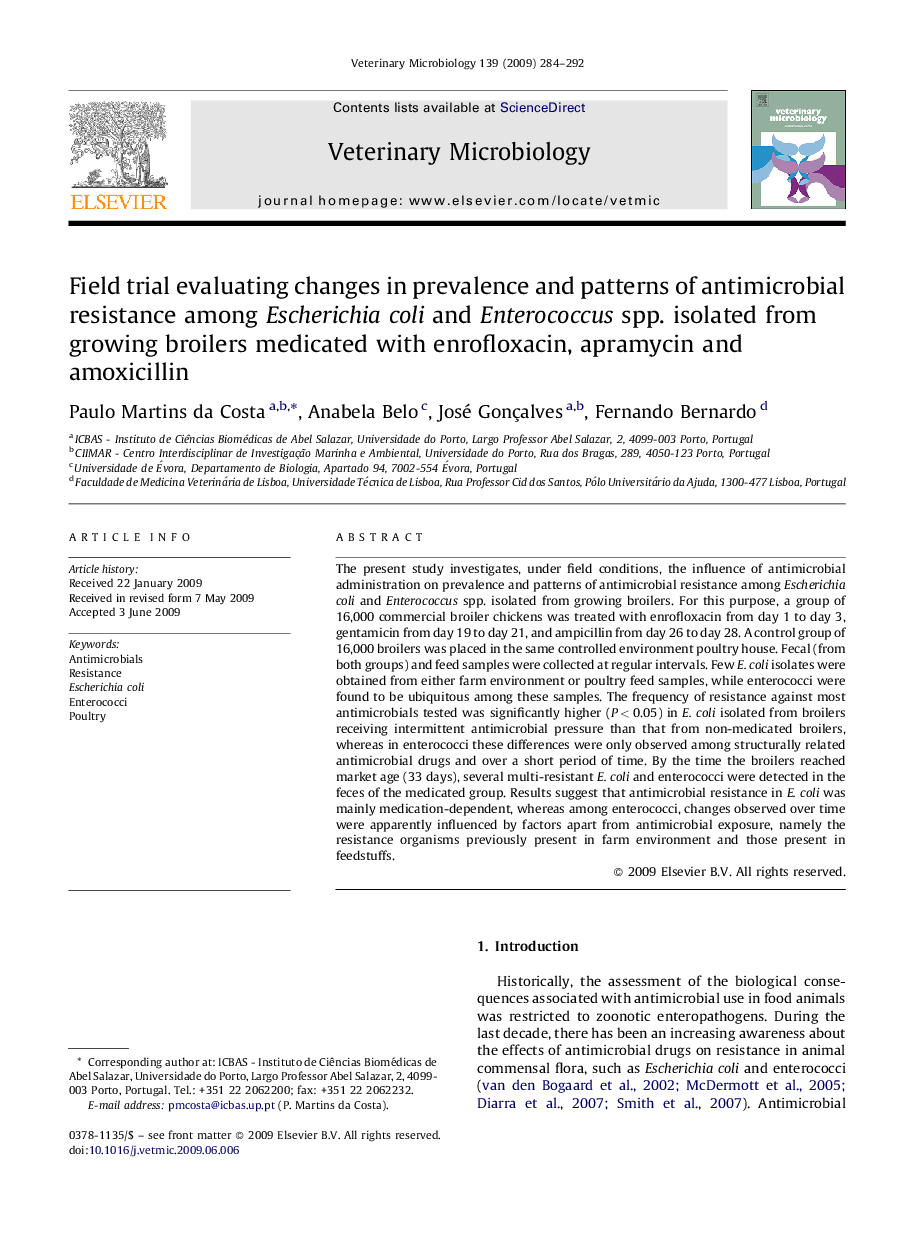| Article ID | Journal | Published Year | Pages | File Type |
|---|---|---|---|---|
| 5801888 | Veterinary Microbiology | 2009 | 9 Pages |
The present study investigates, under field conditions, the influence of antimicrobial administration on prevalence and patterns of antimicrobial resistance among Escherichia coli and Enterococcus spp. isolated from growing broilers. For this purpose, a group of 16,000 commercial broiler chickens was treated with enrofloxacin from day 1 to day 3, gentamicin from day 19 to day 21, and ampicillin from day 26 to day 28. A control group of 16,000 broilers was placed in the same controlled environment poultry house. Fecal (from both groups) and feed samples were collected at regular intervals. Few E. coli isolates were obtained from either farm environment or poultry feed samples, while enterococci were found to be ubiquitous among these samples. The frequency of resistance against most antimicrobials tested was significantly higher (PÂ <Â 0.05) in E. coli isolated from broilers receiving intermittent antimicrobial pressure than that from non-medicated broilers, whereas in enterococci these differences were only observed among structurally related antimicrobial drugs and over a short period of time. By the time the broilers reached market age (33 days), several multi-resistant E. coli and enterococci were detected in the feces of the medicated group. Results suggest that antimicrobial resistance in E. coli was mainly medication-dependent, whereas among enterococci, changes observed over time were apparently influenced by factors apart from antimicrobial exposure, namely the resistance organisms previously present in farm environment and those present in feedstuffs.
